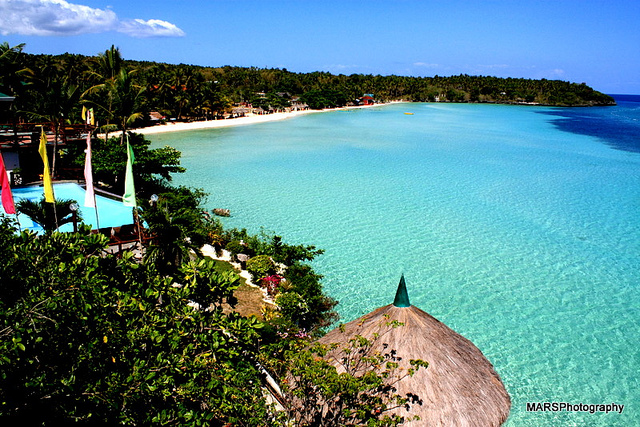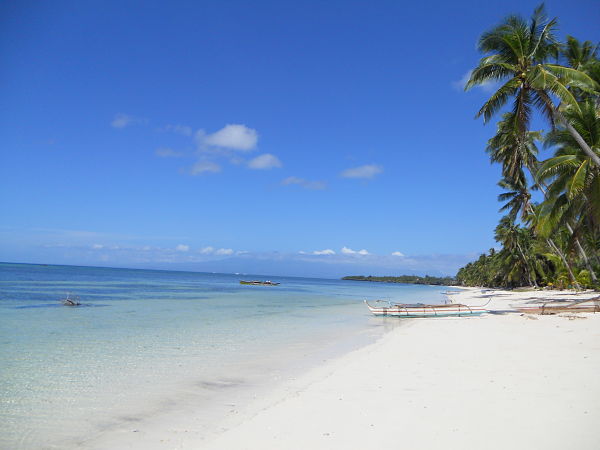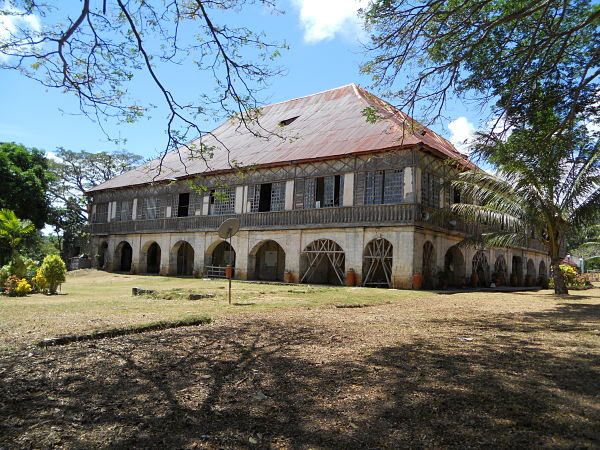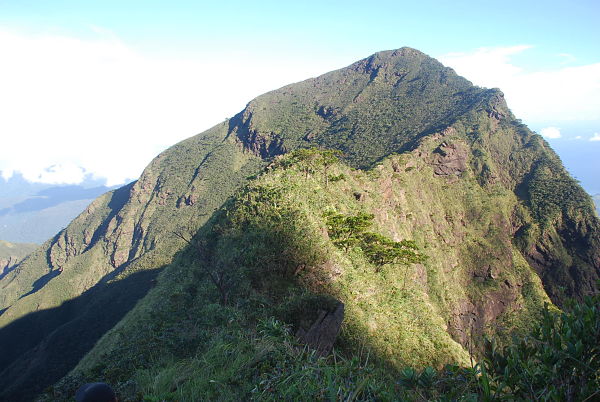Maria is a common Spanish name, and it is also a name of a town in Siquijor, a province deeply devout in the Catholic faith. Maria, the town, is famous for a delectable beach and (eerie) Catholic (night-walking) image of Santa Rita.
To get to Maria, you can take a “habal-habal” (heavy-duty motorcycle that should only seat two but usually seats four or more depending on the direness of the situation) from Larena for US$5 to and from. Or, you can rent an entire tricycle for a whole day tour around the diminutive island of Siquijor (which only takes two hours on moderate speed) for US$25. Some even pay less if they are only a couple. Travel time from Larena to Maria via a mountain highway is one hour or shorter one way.
For day-trippers, Maria is doable in two, maybe three, hours. But for an unapologetically slow traveler like me, Maria deserves a day by itself. Here’s why.
Larena is the commercial hub of the Siquijor province. Larena is also its transport corridor. Mini-buses that ply the Larena-Lazi route pass by Maria. Fare is US$1.25 until the Salagdoong junction. Then there is the two-kilometer walk to Salagdoong Beach under the canopy of “tugas” trees (remember how scarce public transport is in this province?), unless you hire a “habal-habal” from Larena, in which case the two kilometers will be a breeze.
Maria Bay is spectacular even on a cloudy day. The protrusion on the left of the bay is the Salagdoong Beach.
This church features Santa Rita de Cascia, Patron Saint of the Impossible, abused wives and mourning widows (having previously married herself).
The ornate and gilded “retablo” (literally, “behind the table or altar”) is one of the oldest in the province. Santa Rita is the black and white figure to the right. Images of other bloggers reveal that her face looks eerie, and that she holds an upside-down crucifix in her left hand, and a skull in her right. I wanted to come up close and take a picture, but there was an ongoing “novena” (rosary prayer), which would make crossing over to the altar “blasphemous.” Siquijor legend has it that Santa Rita is a somnambulist (nightwalker) because locals claim her feet would be sullied in the morning.
I would have wanted to walk this two-kilometer stretch all the way to the beach. Locals call this the “katugasan.” That same name is thought to be the original name of Siquijor instead of the Spanish name “Isla del Fuego” (“island of fire”, in reference to the swarms of firefly they saw upon arrival). The hills of Siquijor were once covered in molave trees; if so, this forest is likely primary growth. On the map, this patch of “tugas” trees is marked as Salagdoong Forest. The contrast of the sounds of birdlife and the otherwise deafening silence of midday struck a primeval nerve.
“Salagdoong” refers to these gi-normous birds. No luck finding their scientific name.
Salagdoong Beach is owned and managed by the provincial government.
The swimming pool is just one of the modern amenities on the beach. Guest rooms are also modern and made of concrete.
The slide and the diving platforms are popular with kids and screaming adults.
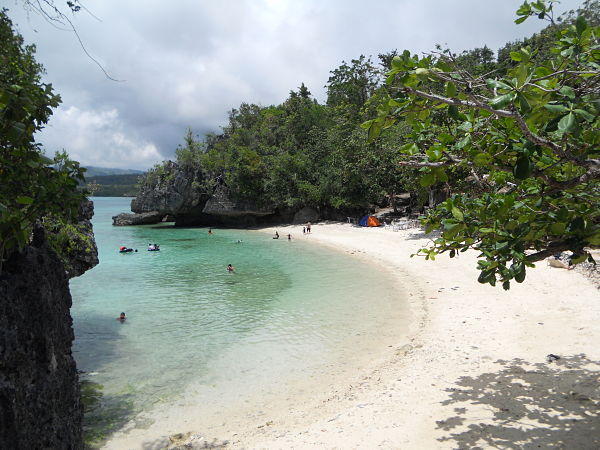
This is the sandier portion of Salagdoong Beach. The rock overhangs are a favorite playground of children and adults alike. (Overnight) camping by the beach is allowed (US$2.50 per person exclusive of tent).
The waters are unbelievably inviting. A jump from here would land the brave of heart straight into the white sands below. The current, however, can be strong, so caution has to be taken when jumping.
“Ambak” (cliff-jumping) is apparently popular among intrepid kids.
Salagdoong Beach is a jewel even in overcast days. You can get accommodation facing the bay for exhilarating views upon waking up. You can check the price per room at Agoda website here.
Click here for next article (Siquijor series) – >>
Photos by Cherry Vic Patalita

